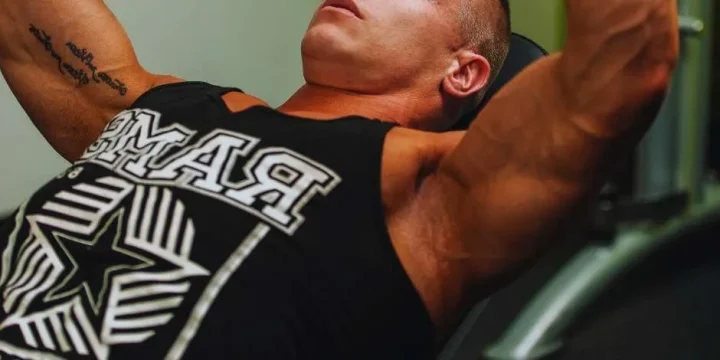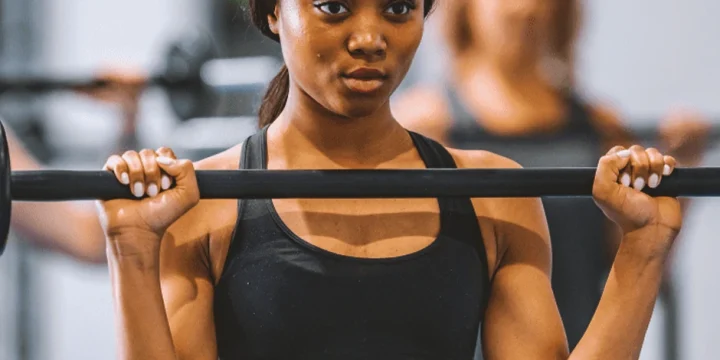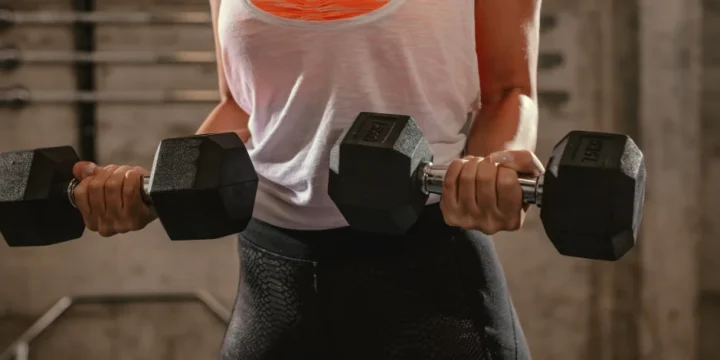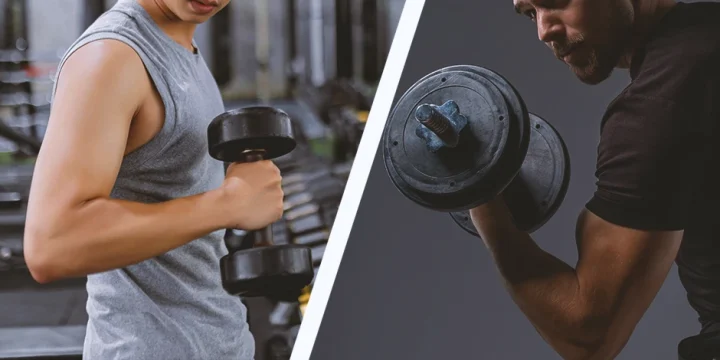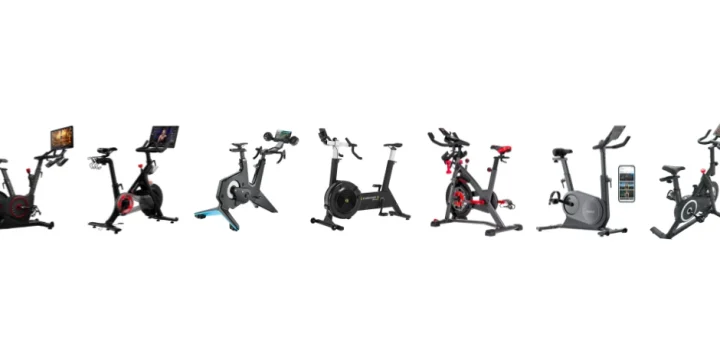After testing multiple biceps exercises, we found that spider curls is a great isolation exercise. And compared to other bicep curls, it has a full range of motion and squeezes your biceps better.
Based on my observations, spider curls require a controlled tempo, and proper technique to maximize their benefits. So, consider this article before performing it if you're an experienced weightlifter looking to vary your bicep training routine or someone just starting in fitness.
After 25-hour research, I’m providing a detailed and practical analysis of how to properly perform spider curls, alternatives and variations, benefits, and precautions.
Quick Summary
- To perform a spider curl, you need a barbell, an inclined bench, and following the proper technique for bigger arms and building muscle over time.
- Spider curls uniquely target the short head of the biceps, optimizing overall bicep development and enhancing muscle definition.
- The National Institute of Health emphasizes training the Biceps Brachii, Brachialis, and Brachioradialis for strength, aesthetics, elbow flexion, and upper body support, using spider curls and its variations.
- In my opinion, spider curls are an excellent choice for those looking to diversify their arm workouts and achieve more defined biceps, especially when combined with a balanced diet and protein supplements.
What Are Spider Curls?
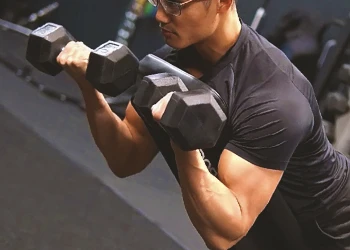
Spider curls are strength-training exercises that focus specifically on the bicep muscle group.
The exercise gets its name from the "spider" bench used in its traditional setup: a preacher bench flipped around.
The arm position hanging towards the ground makes spider curls stand out, eliminating the potential to use momentum or the shoulders to lift the weight.
How to Make Spider Curls Properly?

In my experience as a personal trainer, I've found that using an inclined bench and a barbell for spider curls effectively targets the biceps from a unique angle, differing from traditional curls.
This method has been ideal for clients who seek to diversify their arm training and aim for larger, stronger biceps.
Here are the detailed steps to perform a Spider Curl:
- Set up an incline bench and sit facing toward it with a barbell at hand.
- Lean onto the bench so your chest is against the incline and your arms hang down.
- Grab the barbell with an underhand grip and arms fully extended.
- Keep your upper arms stationary and curl the barbell towards your shoulders.
- Return to the start position, fully extending your arms.
Spider Curls Variations And Alternatives

Check the following spider curl variations to include in your training routine:
Preacher Curl
The preacher curl is a bicep-focused exercise for the specific bench used during the move, resembling a preacher's pulpit.
This exercise isolates the biceps, putting them under continuous tension and reducing the involvement of other muscle groups.
The key to the preacher's curl is slow, controlled movements. Rushing through the exercise reduces its effectiveness.
How to perform Preacher Curls:
- Adjust the preacher bench so the sloped side is comfortably under your armpits when seated.
- Grab a barbell or dumbbells with an underhand grip. Ensure your hands are shoulder-width apart if using a barbell.
- Extend your arms over the bench with your triceps resting on the padded slope. Your palms should face upwards, and your elbows close together.
- Curl the weight towards your shoulders while keeping your upper arms and elbows stationary.
- Squeeze your biceps at the top, then gradually lower the weights to the starting position.
- Perform the number of reps while maintaining control and form.
Reverse-Grip Spider Curl
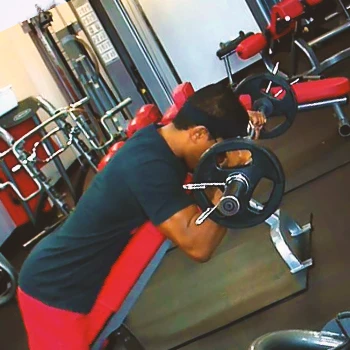
The reverse-grip variation is a type of exercise that targets the brachialis and the brachioradialis, providing a comprehensive arm workout.
It helps improve grip strength and enhance the size and definition of your arms.
How to perform it:
- Set up just like you would for a typical spider curl, but grasp the barbell with a supinated grip.
- Keep your upper arms stationary.
- Curl the weight up to shoulder level.
- Lower the barbell slowly and control it to the starting position.
“Results show that both biceps brachii and brachioradialis exhibited greater levels of excitation with the supinated compared to the pronated and neutral handgrip.”
- Giuseppe Coratella, Ph.D in Sport & Movement Science
Resistance Band Spider Curl
As a personal trainer, I often recommend the resistance band spider curl to my clients who prefer a lightweight variation for their workouts.
The tension from the resistance band constantly challenges the biceps throughout the movement.
This is not a good exercise to build muscle, but it has a greater range of motion.
How to perform it:
- Sit on a bench and loop the resistance band under both feet.
- Hold the band’s other ends with your palms facing upwards.
- Curl towards your shoulders, then slowly release them back down.
Cheat Curl
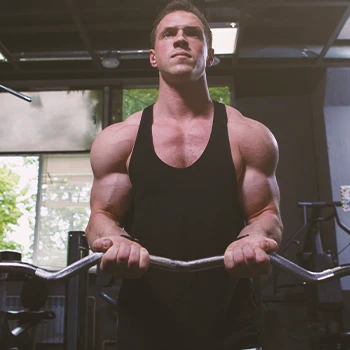
Cheat curls use body momentum to lift heavier weights, pushing biceps beyond typical limits, which makes it great for building muscle and strength.
The low resistance offers an excellent eccentric workout, enhancing muscle fiber activation and growth.
How to perform it:
- Stand upright, feet shoulder-width apart, with a barbell held in an underhand grip.
- Swing and bend at the hips to create momentum that assists in lifting the barbell.
- Maintain control to engage the biceps as you lift the weight.
- Lower the weight slowly, providing adequate resistance to the weight as you return to the initial position.
Cable Curl
The cable curl is ideal for maintaining constant tension on the biceps throughout the movement.
The motion increases overall muscle engagement, leading to more significant muscle development and definition with a controlled range of motion.
How to perform it:
- Go to a cable machine with a straight bar attachment at the lowest setting.
- Grasp the bar with an underhand grip, ensuring your elbows are close to your body.
- Curl the bar upward towards your shoulders, keeping your upper arms stationary to isolate the biceps.
- Lower the bar to the starting position, maintaining tension in your biceps throughout the move.
Related: Best Cable Machine Bicep Exercises
Dumbbell Spider Curl
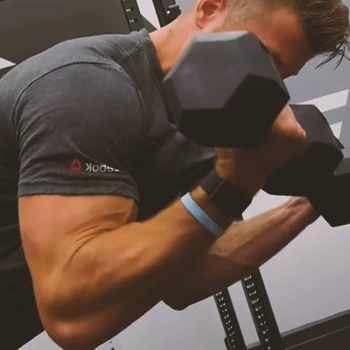
A dumbbell exercise such as the spider curl is a variation that promotes unilateral biceps curls exercises, ensuring each arm works independently and equally.
This approach strengthens your biceps and promotes balanced muscle development.
It's a great way to identify and correct any imbalances.
How to perform it:
- Assume the standard spider curl position, but instead of a barbell, or an EZ bar, hold a dumbbell in each hand.
- Keep your upper arms steady and curl the weights upward to shoulder level, concentrating on the bicep contraction.
- Lower the weights slowly, resisting gravity to maximize the eccentric phase of the exercise.
Comparison with Other Bicep Isolation Exercises
Spider curls effectively isolate biceps with constant tension, ideal for muscle definition and suitable for all levels, but they require careful weight selection to avoid bicep strain.
- Standing barbell curls, targeting both bicep heads, allow heavier lifts but pose a higher injury risk due to potential back strain from improper form, best for intermediate to advanced users.
- Hammer curls, engaging the brachialis for arm thickness, are wrist-friendly and suitable for all levels.
- Preacher curls, isolating biceps with reduced momentum, minimize injury risk but can stress elbow joints, making them suitable for those with good joint health.
Spider Curls on Your Arm Workout Routine

I've found that integrating spider curls into my clients' biceps workouts significantly enhances their training, thanks to the exercise's exceptional ability to isolate the biceps.
The following is a workout routine that includes spider curls and other exercises to get bigger biceps:
Warm-Up
- Arm Circles: 30 seconds in each direction
- Wrist Curls: 2 sets of 15 reps each
- Lightweight Curls: 2 sets of 15 reps each
- Wall Push-Ups: 2 sets of 10 reps each
Workout
- Dumbbell Curls: 3 sets of 12 reps
- Hammer Curls: 3 sets of 12 reps
- Spider Curls: 3 sets of 15 reps
- Triceps Pushdown: 3 sets of 12 reps
Cooldown
- Arm Stretches: Hold for 20-30 seconds
- Overhead Tricep Stretches: Hold for 20-30 seconds
- Wrist Stretch: Hold for 15-20 seconds
- Forward Bend: Hold for 30 seconds
Muscles Trained with Spider Curls
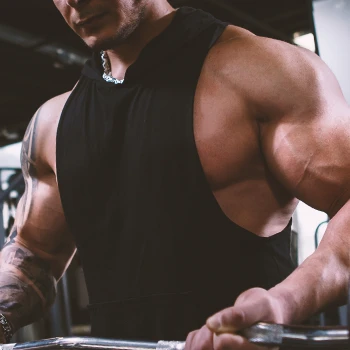
Spider curls target the following muscles:
- Biceps Brachii Muscles
- Brachialis
- Brachioradialis
According to the National Institute of Health, they are in charge of body strength, aesthetics, elbow flexion, and support the upper body muscle group for steady muscle growth [1].
Mistakes to Avoid When Doing Spider Curls

I've noticed that certain spider curl mistakes can lead to either bulging biceps or underperformance in my clients' training.
This is what you must avoid:
- Using Momentum: Don’t use momentum or swing the weight up. Ensure you control the motion and focus on muscle contraction.
- Incomplete Range of Motion: Extend your arms at the bottom of each rep to make the most of spider curls.
- Rushing the Movement: Spider curls are most effective when performed slowly and deliberately. Try to maintain a steady pace throughout the set, taking about two seconds to lift the weight and another two seconds to lower it.
- Lifting Too Heavy: Your form will suffer if the weight is too heavy. Lifting lighter weights with perfect form is better than heavier weights with poor technique.
- Ignoring the Negative: Lowering the weight (the eccentric or 'negative' part of the movement) is just as important as lifting it. During this phase, a lot of the muscle damage that leads to growth occurs.
FAQs
Can I Do Spider Curls at Home?
Yes, you can do spider curls at home. You need a set of dumbbells and an inclined bench. You can improvise with any sturdy, inclined surface if you don't have an inclined bench.
Can I Do Spider Curls Without a Bench Press?
Yes, you can do spider curls without a bench press. While the inclined bench is a staple in performing spider curls, you only need an inclined surface.
Are Spider Curls Necessary for My Training?
Yes, spider curls can be a valuable addition to your training routine, especially if you aim to enhance your biceps' size and definition.
References:
- https://www.ncbi.nlm.nih.gov/pmc/articles/PMC4526813/
About The Author
You May Also Like
